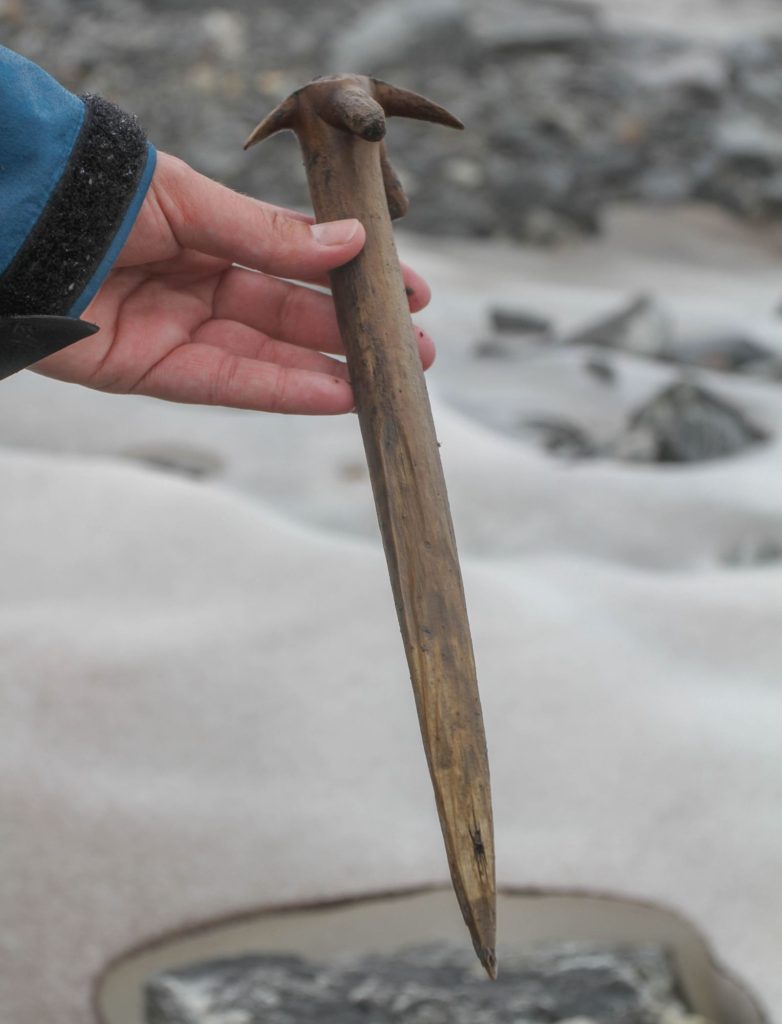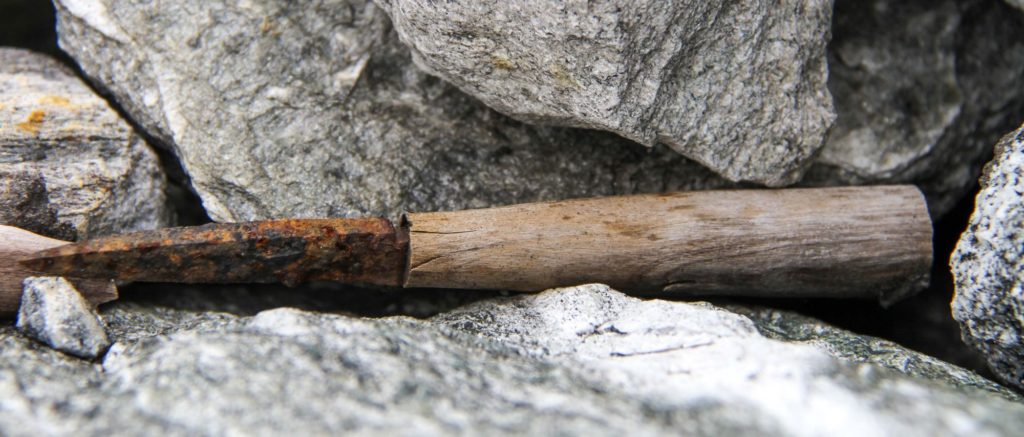The finds from the ice mainly derive from hunting, transport and clothing. However, glaciated mountain passes may also provide artefacts that belong to the daily life of ancient times.
The Lendbreen site has provided a number of everyday items that probably had no immediate function in the high mountains, but were lost on the way.

One such artefact is a wooden whisk, found in the Lendbreen mountain pass in 2011. It is unusual for whisks, such as this one, to have a pointed end, so it may have been used secondarily for something else, not its original purpose. Maybe as a tent plug? It is made of pine and dated to the 11th-12th century.

A small iron knife with a wooden handle was found at Lendbreen in 2014. Knives have also been found at two other ice patches in Oppland, but these knives are larger and more solid, and were probably used for butchering reindeer. The small knife from Lendbreen is not strong enough for this purpose, but it is not known what it was used for. The handle is made in birch, and a sample from it has been radiocarbon-dated to be c. 1000 years old.
A number of other Lendbreen finds have no known use, but may belong to daily life. Most of the objects are of organic materials and have few or no known parallels among earlier finds from Norwegian prehistory. This gives the finds from the ice special importance. First when entering the Middle Ages do we gain a broader view of the material culture in organic materials. This is due to the excellent preservation conditions in the cultural deposits in the medieval towns.
